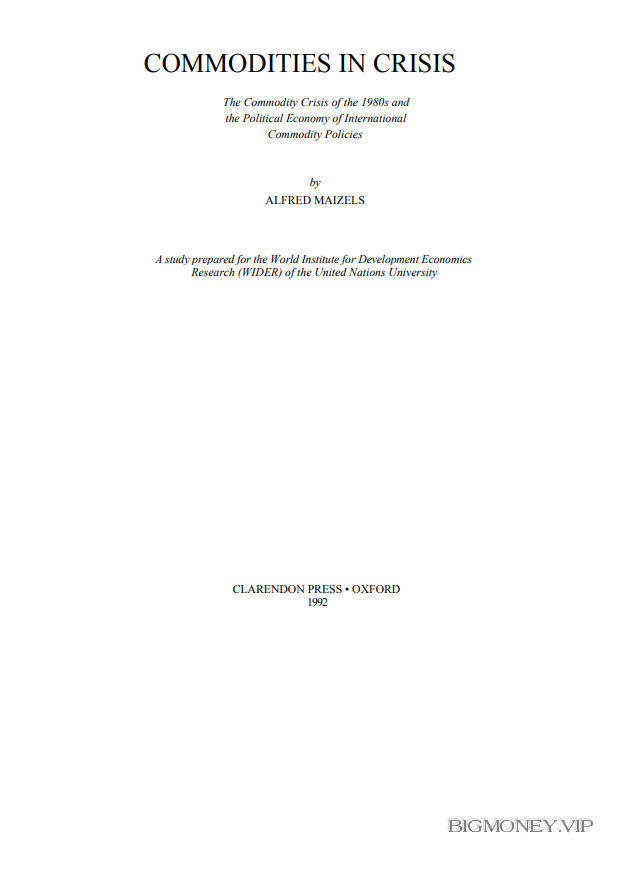COMMODITIES IN CRISIS The Commodity Crisis of the 1980s and the Political Economy of International Commodity Policies by Alfred Maizels

I
THE COMMODITY CRISIS AND
THE DEVELOPING COUNTRIES
1
The Commodity Price Collapse of
the 1980s
1. COMMODITIES IN THE DEVELOPMENT PROCESS
The great majority of the population of developing countries depend for their
welfare and livelihood on the production and exports of primary commodities.
The economic return to commodity producers is thus a central element in the
potential for economic and social progress of these countries. But, as already
mentioned, the importance of the commodity sector for the developed countries
must not be overlooked. These countries are themselves major producers of a
wide range of commodities, as well as being the traditional markets for the greater
part of the commodity exports of developing countries. Changes in the condi-
tions of commodity production, consumption, and trade, and particularly the
resultant changes in commodity prices, can therefore have important impacts on
the economic situation of both developed and developing countries, and thus on
the whole world economy.
However, these impacts tend generally to be asymmetrical, since the rela-
tive weight of the commodity sector in the national economy is much greater
in most developing, than in most developed, countries. Equally, the dependence
of most developing countries on commodities for their export earnings is very
substantially higher than that of most developed countries. This much greater
dependence of the majority of developing countries on the commodity sector
is essentially a hangover from the period of colonial rule, when the task of the
former Colonies was to supply cheap food and raw materials to the metropoli-
tan powers and to provide an assured market for a reverse flow of manufac-
tured goods. Though a number of countries have succeeded in modernizing
and industrializing their economies – particularly the NICs of East Asia – this
process has not proceeded very far in many others, which still retain essentially
the same lopsided economic structures that they inherited from the Colonial
period.
None the less, the potential exists in the post–Colonial period for the com-
modity sector to play a central role in economic development. This can be
achieved in one, or both, of two ways, viz. by providing an increasing volume
of food and raw materials to support domestic industrialization and economic
growth; and by earning foreign exchange from commodity exports to finance the
imports of capital goods and other essentials for domestic economic and social
progress. Up to now, the majority of developing countries have relied essen-
tially on the latter route, i.e. on the export of their commodities to earn foreign




